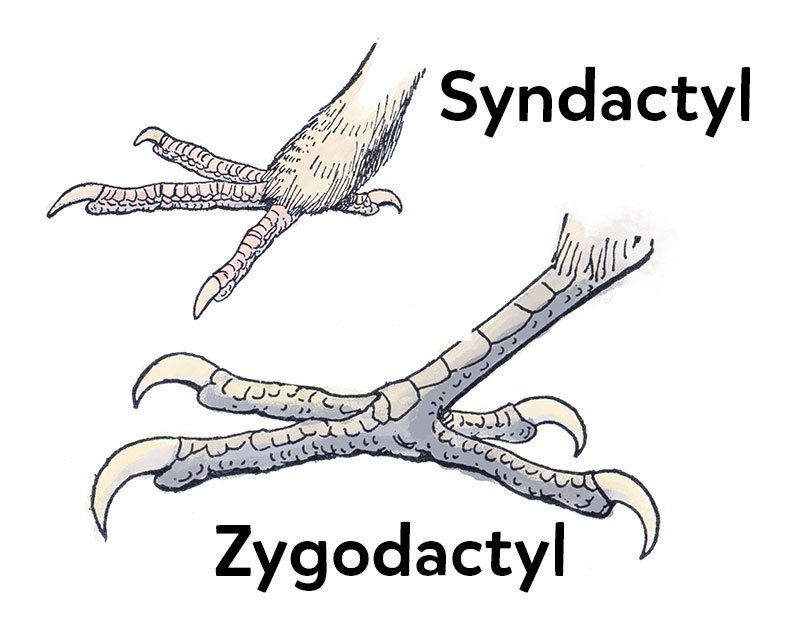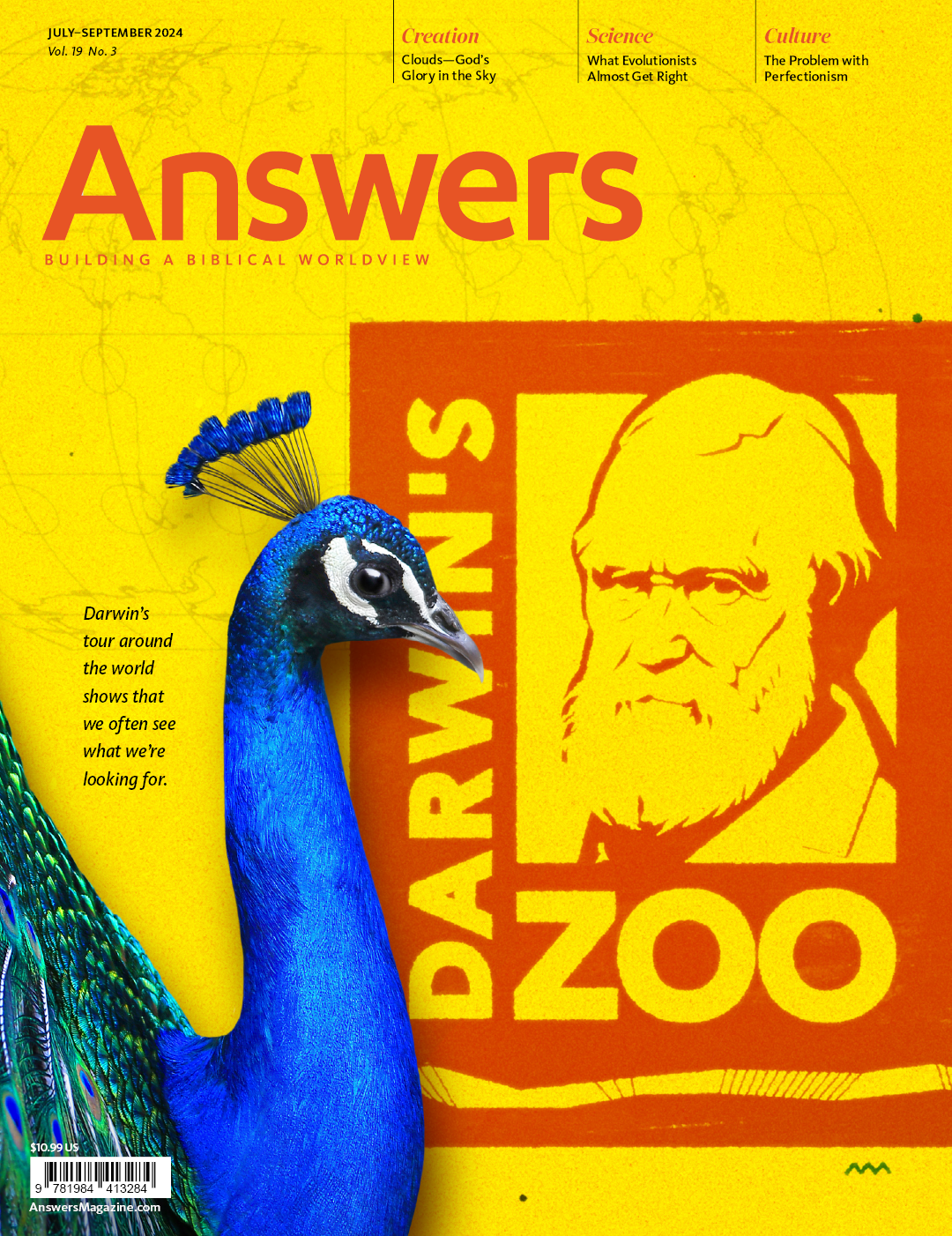What We Knew About the Woodpecker
As we study God’s world, new scientific discoveries sometimes change what we thought we knew. Can we still explain these changes with our understanding of God’s design?
We grew up hearing many “facts” that we assumed must have solid research backing them up.
Your tongue has four distinct areas of tastebuds. Not really.
The white stuff oozing out of that AA battery is acid, right? Nope. It’s actually a base, the opposite of an acid (though it can still give you a chemical burn).
Blood is red in your arteries and blue in your veins. No, it’s always red.
Lightning never strikes the same place twice. Try telling that to the Empire State Building which was once struck eight times in a storm.
These so-called facts are likely accepted as truth as a result of people repeating them without checking for accuracy.
Here’s another one: Woodpeckers have a spongy bone in their skull that acts like a shock absorber against concussions.
Well-meaning scientists operated by this information for decades. Many people in the creationist community even referred to this feature as proof of an amazing designer who provided protection for these magnificent birds.
But scientists recently discovered that this long-accepted fact isn’t true. Does that mean God is a bad designer—or that he isn’t the designer of these birds at all? Of course not. But it does mean that we need to adjust how we talk about the woodpecker’s design in the light of this new discovery.
What the Pictures Showed
In the 1970s, scientists studied the structure of woodpecker skulls to understand how the birds avoided concussions. They hoped to provide information that could help develop safety systems, such as for vehicles and helmets. It seemed reasonable that the porous bony structure in the woodpecker’s skull allowed the beak to plow into wood while slowing down the skull as it absorbed some of the shock and protected the brain from injury.
But even in a 1976 article, these scientists recognized that if the skull absorbed some of the energy, then every thrust would have to be stronger to accomplish the same degree of penetration.1 Despite this apparent conundrum that seemed to defy the laws of physics, the idea of the shock absorber in the skull slipped into common lore.
Through the following decades, researchers continued looking at the woodpecker’s brain bashing from various angles. Fast forward to 2022. While attempting to confirm whether the porous bone in the woodpecker’s skull acts like a shock absorber, researchers used a high-speed camera to record the birds pecking. They identified landmarks on the woodpecker’s head (two on the beak and one or two on the skull) to differentiate the deceleration between the two areas.
If the bone between the brain and beak were acting as a shock absorber, the landmarks near the eyes on the skull should shift and cause a smaller amount of deceleration as the compression happened. But that was not the case.
These results were compared on multiple individuals in three different woodpecker species to ensure the results were not a fluke. Analyzing the video frame by frame and calculating the accelerations showed no significant difference in the deceleration. The researchers had proven conventional wisdom wrong.2
Scientific Inquiry
Just as the shock absorbing theory was repeated until further research proved it to be false, the same thing happens when a preacher encounters an idea he likes in a sermon or Bible commentary. Without vetting the idea, he passes it on in a sermon to the people in his congregation who hear it and repeat it. The next thing you know, Jesus was really good at building furniture, abba means papa, and three wisemen worshipped baby Jesus at the manger—none of which are supported by the Bible and its historical context.
We must check ideas against Scripture, verify them with trustworthy commentaries or other historical sources, and choose not to hold onto or repeat things we cannot confirm.
God has revealed himself to us in the pages of Scripture and in his creation (Psalm 19:1; Nehemiah 9:6; Romans 1:18–20). Just as we need to diligently discern truth as we study God’s Word, we need to do so when studying God’s world. The role of scientific inquiry is to try to understand how God created his world to function.
As Johannes Kepler said, when we study creation, we are “thinking God’s thoughts after him.” That means we get to explore how the woodpecker can handle banging its head into a tree with 1,000 times the acceleration of gravity over 10,000 times a day and not get a massive headache or wind up with concussion symptoms.
As we study God’s world, we must corroborate information we hear or, as scientists, continue conducting research until we reach the accurate conclusions. And we can discern truth in God’s world in no better way than by starting with God’s Word, which says that God supernaturally created the world in six days and then that original perfect creation was corrupted by sin (Genesis 3).
Scientists often arrive at wrong conclusions because they begin thinking from a faulty starting point—especially when dealing with origins. They believe the big bang and evolution explain everything through random chance processes—including the woodpecker’s features. But the research done to examine the woodpecker’s head structure didn’t bring evolutionary ideas into play; rather it fits within our biblical understanding of God’s design for these beautiful birds.
Determining Truth
I’m sorry that your mom misled you about the battery acid, but I’m sure it wasn’t on purpose. Similarly, the scientists who erroneously used the shock absorber to point out the woodpecker’s amazing design didn’t do so intentionally. However, these examples are great reminders for each of us to examine every claim we hear to determine what is true—whether the claim is about God’s Word or God’s world.
The Right Equipment
Woodpeckers thrive with specialized features, all crafted by their designer. Whether in the woods or on a back-porch feeder, these fabulous flyers provide a flashy show of God’s creativity and care.
20 times a second
Woodpeckers can drill out 20 pecks a second and usually peck 8,000–12,000 times a day.

Zygodactyl toes (two pointing forward and two backward) help woodpeckers grip the tree bark and hop with ease.
Bristly feathers cover their nostrils to keep out wood pieces.
Stiff tail feathers allow woodpeckers to brace themselves against a tree as they ram their beaks into the bark.

The hyoid bone that supports the woodpecker’s tongue wraps all the way around the skull. This allows the pileated woodpecker’s tongue to extend several inches to probe for grub nuggets. It also acts as a safety belt to brace the brain as the woodpecker pounds away.
Some woodpecker species grab grubs with an adhesive tongue.
5 inches past the beak
Some woodpecker species’ tongues extend up to 5 inches past the tip of the beak.
A woodpecker’s beak has three layers: an outer, keratin-coated layer; a middle foam-like layer; and an inner bony layer.
14 times the force a human could withstand
The woodpecker can drill at forces of 1,200 to 1,400gs—nearly 14 times the g-force that would give a human a concussion.
Answers Magazine
July–September 2024
Darwin’s tour around the world shows that we often see what we’re looking for.
Browse IssueFootnotes
- P. R. May et al., “Woodpeckers and Head Injury,” Lancet, February 28, 1976, 454–455.
- Sam Van Wassenbergh et. al, “Woodpeckers Minimize Cranial Absorption of Shocks,” Current Biology, July 14, 2022, https://www.cell.com/current-biology/fulltext/S0960-9822(22)00855-7 or the popular level article “Why Woodpeckers Don’t Get Concussions,” Physics Today 77 no. 1, 54–55 (2024), https://pubs.aip.org/physicstoday/article/77/1/54/2930559/Why-woodpeckers-don-t-get-concussionsContrary-to.

Answers in Genesis is an apologetics ministry, dedicated to helping Christians defend their faith and proclaim the good news of Jesus Christ.
- Customer Service 800.778.3390
- Available Monday–Friday | 9 AM–5 PM ET
- © 2026 Answers in Genesis



